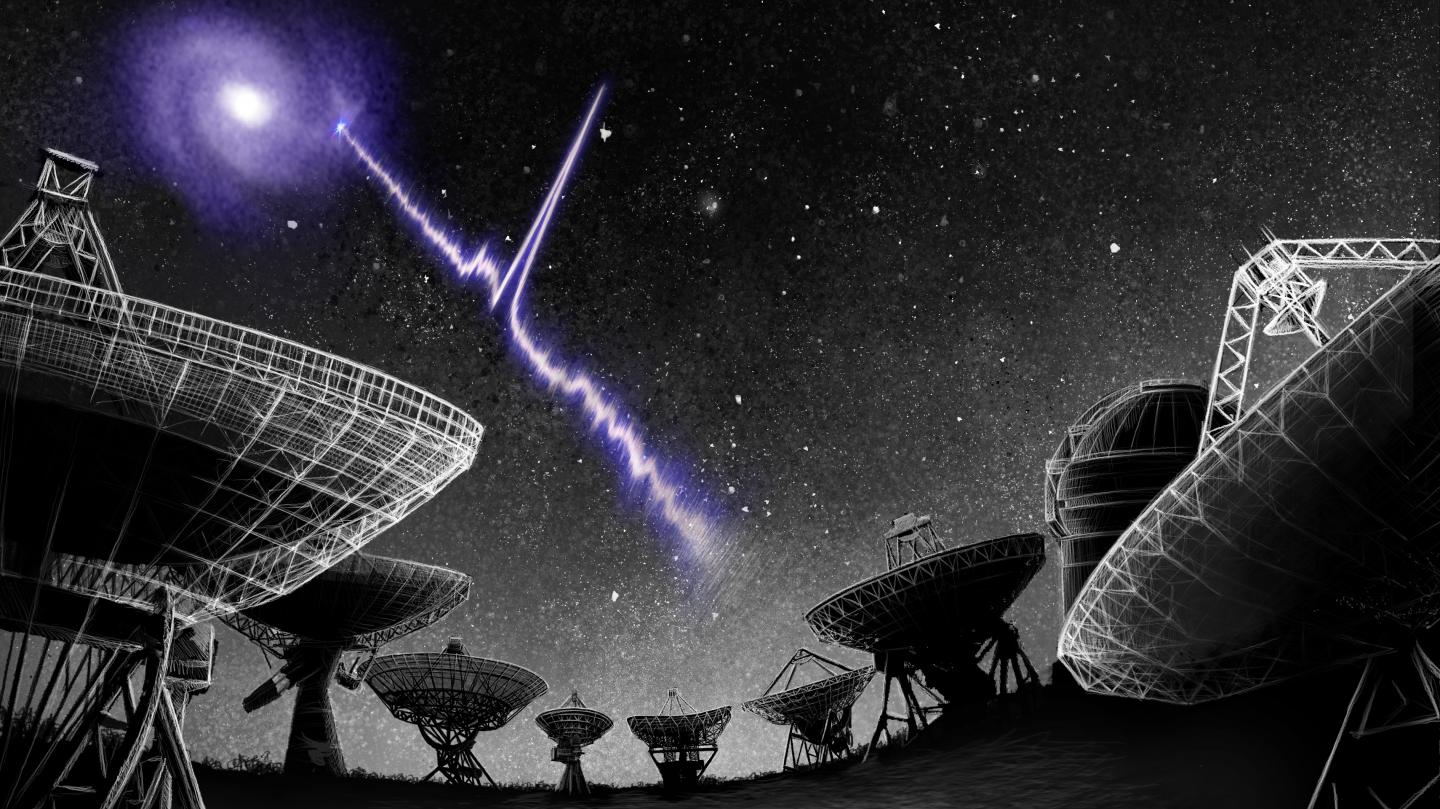Post-doc Kasper Heintz from DAWN to study radio bursts at the Very Large Telescope
Currently, there isn’t an in-depth explanation of the so-called “fast radio bursts” that only last milliseconds. Kasper Heintz, a post-doc at the DNRF’s Center of Excellence DAWN at KU and DTU, has been awarded 180 hours at the Very Large Telescope, one of the world’s most prestigious and advanced observatories. Heintz will use these hours to dive into this phenomenon, with the research project “Fast radio bursts: Origins and cosmology.”

Post-doc Kasper Heintz from the DNRF’s DAWN at KU and DTU has been awarded 180 observation hours at the Very Large Telescope in Chile. There, he will study the so-called “fast radio bursts” in his new research program “Fast radio bursts: Origins and cosmology.” There still isn’t much information about the fast radio bursts, which occur outside of our own galaxy.
The fast radio bursts are in themselves hard to study in detail, as they are so short-lived. At the moment, more than 500 bursts have been detected, but out of these, only 15 are connected to their host galaxy. That is why the localization of the host galaxy plays an essential role when it comes to expanding our understanding of the fast radio bursts.
Localization of host galaxies, redshifts, and the expansion rate of the universe
With this program, Heintz will follow up on observations made at the telescope Australian Square Kilometre Array Pathfinder (ASKAP), which at the moment is the only telescope able to localize the fast radio bursts. Unfortunately, there isn’t much information to find from the radio signals alone. Using the observations from ASKAP as a starting point, Heintz will be able to dive into the previously found fast radio bursts and observe them in an optical and near-infrared light, which is possible at the Very Large Telescope in Chile. Once it is possible to identify the fast radio bursts’ host galaxies, it will be possible to examine other areas such as the physical properties of the galaxy and the stellar populations around it.
Besides the fleeting fast radio bursts and their host galaxy, the project will also study another astronomical phenomenon: the so-called redshifts, which the researchers will be able to read once the host galaxy has been identified. The redshifts occur when the wavelength becomes longer by being stretched toward the red light seen in the wavelength. The work with the redshifts can, in time, move Heintz toward working on another important topic – the expansion rate of the universe.
Read more about the project “Fast radio burst: Origins and cosmology” at DAWN here
More information about DAWN here
